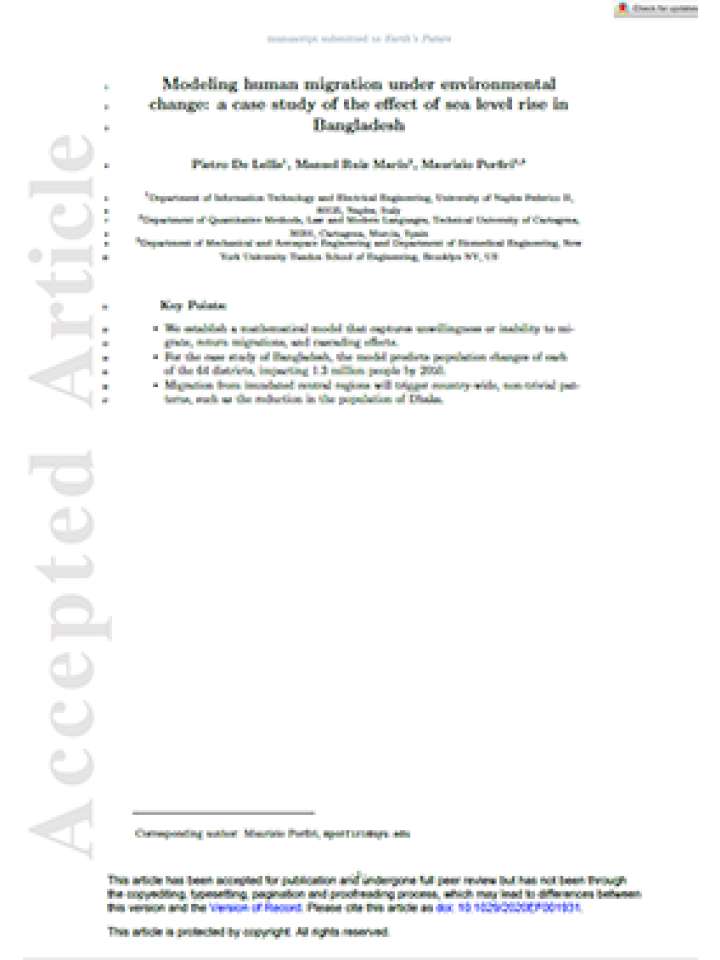Modeling human migration under environmental change: a case study of the effect of sea level rise in Bangladesh
This report presents how sea level rise could have catastrophic consequences worldwide. More than 600 million people currently living in coastal areas may see their livelihood at risk and choose to migrate in the near future. Predicting when, how, and where people could migrate under environmental change is critical to devise effective policy initiatives and improve our preparedness. Here, we propose a modeling framework to predict the effect of sea level rise on migration patterns from easily‐accessible geographic and demographic data.
The framework adapts the radiation model to capture unwillingness or inability to migrate of affected residents, as well as return migration and cascading effects in migration patterns. It applies the mathematical model to study internal migration in Bangladesh, predicting a complex and counterintuitive landscape of migration patterns between districts. The report's predictions indicate that the impact of sea level rise on 816 thousand people by 2050 will trigger cascading effects in migration patterns throughout the entire country. The population of each of the 64 districts will change, leading to a total variation of 1.3 million people. Migration from inundated regions in the center will trigger non‐trivial patterns, including a reduction in the population of the district of the capital Dhaka.
Explore further
